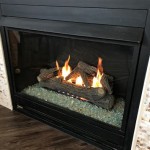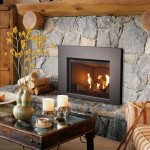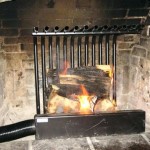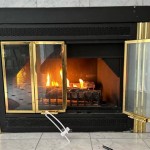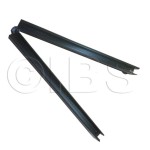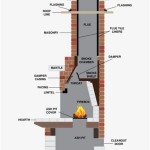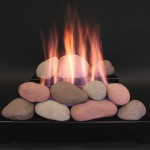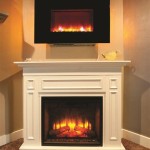```html
Outdoor Linear Gas Fireplace Kits: A Comprehensive Guide
Outdoor linear gas fireplace kits provide a sophisticated and convenient way to enhance any outdoor living space. These kits offer a sleek, modern aesthetic and the ease of installation associated with pre-packaged solutions. Unlike traditional wood-burning fireplaces or custom-built gas fireplaces, these kits streamline the construction process, saving time and resources. This article delves into the various aspects of outdoor linear gas fireplace kits, including their benefits, components, installation considerations, safety features, and design options.
Understanding the Benefits of Outdoor Linear Gas Fireplace Kits
The primary advantage of choosing an outdoor linear gas fireplace kit lies in its simplicity and efficiency. Unlike building a fireplace from scratch, these kits come with pre-engineered components designed to fit together seamlessly. This reduces the complexities of design and construction, making the installation process more manageable for both DIY enthusiasts and professional contractors. Furthermore, the linear design offers a contemporary look that complements various architectural styles, adding a touch of elegance to patios, decks, and gardens.
Another significant benefit is the control and convenience offered by gas-powered fireplaces. With the flick of a switch or the push of a button, the fireplace ignites, providing instant warmth and ambiance. Users avoid the mess and labor associated with wood-burning fireplaces, such as gathering, stacking, and managing firewood. Gas fireplaces also offer adjustable flame heights and heat output, allowing for personalized comfort levels throughout varying weather conditions. Some kits even include remote control functionality, further enhancing the user experience.
Cost-effectiveness is another attractive feature of outdoor linear gas fireplace kits. While the initial investment might be higher than some DIY options, the reduced labor costs, streamlined construction, and efficient operation contribute to long-term savings. The durability of these kits, often constructed from weather-resistant materials such as stainless steel, also ensures a prolonged lifespan, minimizing the need for frequent repairs or replacements.
Key Components of an Outdoor Linear Gas Fireplace Kit
A typical outdoor linear gas fireplace kit comprises several essential components, each playing a crucial role in the functionality and safety of the unit. Understanding these components is vital for informed decision-making during the selection and installation process.
At the heart of the kit is the burner system. This includes the burner itself, typically constructed from stainless steel for durability and resistance to corrosion, and the gas valve, which controls the flow of gas to the burner. The burner is designed to produce a consistent and visually appealing flame pattern, often enhanced by decorative media such as glass beads, lava rock, or ceramic logs. The gas valve ensures a safe and regulated gas supply, often incorporating safety features such as a flame failure device that automatically shuts off the gas if the flame is extinguished.
The firebox, or enclosure, is another critical component. This structure houses the burner system and provides a safe and contained environment for the fire. Fireboxes are typically constructed from steel or concrete, often with a refractory lining to withstand high temperatures. The exterior of the firebox is often clad in decorative materials such as stone, brick, or stucco, allowing for customization and integration with the surrounding landscape.
The control system is essential for managing the fireplace. This can range from a simple on/off switch to a more sophisticated electronic ignition system with remote control capabilities. The control system allows users to adjust the flame height, set timers, and monitor the fireplace's operation. Safety features such as automatic shut-off mechanisms are often integrated into the control system to prevent accidents and ensure safe usage.
Finally, the venting system is crucial for safely exhausting combustion byproducts. Gas fireplaces are typically either vented or vent-free. Vented fireplaces require a chimney or vent to expel exhaust gases outside, while vent-free fireplaces are designed to burn cleanly and efficiently, eliminating the need for a vent. Choosing the appropriate venting system depends on local building codes, the fireplace's design, and the user's preferences.
Essential Installation Considerations for Outdoor Linear Gas Fireplace Kits
Proper installation is paramount to ensuring the safe and efficient operation of an outdoor linear gas fireplace. While some kits are designed for DIY installation, it is often recommended to engage a qualified professional, particularly when dealing with gas lines and electrical connections.
Before beginning the installation process, it's imperative to consult local building codes and obtain the necessary permits. These codes dictate specific requirements for fireplace installations, including setbacks from structures, ventilation requirements, and gas line specifications. Failure to comply with these regulations can result in fines or the need to redo the installation.
Gas line installation requires meticulous attention to detail. A qualified plumber or gas technician should handle the connection to the gas supply, ensuring that the line is properly sized and pressure-tested for leaks. The gas line must also be buried at the appropriate depth to prevent damage and comply with local codes. A shut-off valve should be installed near the fireplace to allow for easy maintenance and emergency shut-off.
Electrical connections, if required for the ignition system or optional features, must also be handled with care. A licensed electrician should perform any electrical work, ensuring that the wiring is properly grounded and protected from the elements. Outdoor-rated electrical boxes and conduits should be used to prevent water damage and ensure safe operation.
Proper ventilation is crucial for vented fireplaces. The chimney or vent must be sized and installed according to the manufacturer's specifications to ensure adequate exhaust flow. The vent should be positioned to prevent downdrafts and to minimize the potential for carbon monoxide accumulation. For vent-free fireplaces, it's essential to ensure adequate ventilation in the outdoor space to prevent the buildup of combustion byproducts.
Finally, the surrounding area should be prepared to accommodate the fireplace. This may involve leveling the ground, building a foundation, or constructing a decorative enclosure. The materials used for the enclosure should be fire-resistant and weather-resistant to ensure long-term durability and safety. Adequate clearance should be maintained around the fireplace to prevent combustible materials from catching fire.
Safety Features Incorporated in Outdoor Linear Gas Fireplace Kits
Safety is a primary concern when dealing with gas-powered appliances. Outdoor linear gas fireplace kits incorporate several safety features to mitigate potential risks and ensure user protection.
Flame failure devices (FFDs) are a standard safety feature in most gas fireplaces. These devices automatically shut off the gas supply if the flame is extinguished, preventing the accumulation of uncombusted gas. FFDs are essential for preventing gas leaks and potential explosions.
Overheat protection mechanisms are also commonly included in gas fireplace kits. These mechanisms monitor the temperature of the fireplace and automatically shut it down if it exceeds a safe level. This prevents overheating and potential damage to the fireplace or surrounding structures.
Pressure regulators ensure a consistent and safe gas supply to the burner. These regulators maintain a constant gas pressure, preventing fluctuations that could affect the flame's stability or damage the burner system.
Ignition systems often incorporate safety interlocks that prevent the fireplace from being ignited accidentally. These interlocks typically require a conscious effort to activate the ignition system, such as pressing and holding a button, to prevent unintended ignition.
Furthermore, many kits are certified by independent testing agencies such as UL or CSA. This certification ensures that the fireplace has been rigorously tested and meets established safety standards. Choosing a certified kit provides assurance that the fireplace has been designed and manufactured with safety in mind.
Exploring Design Options and Customization Possibilities
Outdoor linear gas fireplace kits offer a wide range of design options and customization possibilities, allowing users to create a unique and personalized outdoor living space.
The size and shape of the fireplace can be customized to fit the available space and design preferences. Linear fireplaces are available in various lengths, from compact models suitable for small patios to expansive units that serve as a focal point for larger outdoor spaces. The height and depth of the firebox can also be adjusted to create different visual effects.
The exterior cladding of the firebox can be customized using a variety of materials, including stone, brick, stucco, and tile. These materials can be selected to match the existing architecture of the home or to create a contrasting accent. The color and texture of the cladding can also be customized to achieve a desired aesthetic.
The decorative media used in the firebox can also be customized to enhance the visual appeal of the fireplace. Options include glass beads, lava rock, ceramic logs, and river stones. These media can be arranged in various patterns to create different flame effects and visual textures.
Optional features such as lighting, sound systems, and water features can be integrated into the fireplace design to further enhance the ambiance and functionality of the outdoor space. LED lighting can be used to highlight the fireplace itself or to illuminate the surrounding area. Sound systems can provide background music or create a more immersive entertainment experience. Water features can add a soothing and visually appealing element to the fireplace design.
Finally, the surrounding landscape can be designed to complement the fireplace. This may involve planting trees and shrubs, building seating areas, or installing outdoor lighting. Creating a cohesive and well-designed outdoor space enhances the overall enjoyment and value of the fireplace.
```
Majestic Lanai 60 Linear Outdoor Gas Fireplace Odlanaig North Country Fire

Outdoor Gas Fireplaces Valor

Linear 90 Fire Pit Kit Made For Custom Design Ecosmart

Outdoor Gas Fireplaces L1 Linear Series Kastle Fireplace

Galaxy Linear Outdoor Gas Fireplace Cyprus Air Fireplaces

Single Sided Ready To Finish Gas Fireplace Outdoor Greatroom Greatrooms

Majestic Lanai 48 Linear Outdoor Gas Fireplace Odlanaig North Country Fire

Majestic 48 Lanai Contemporary Outdoor Linear Vent Free Gas Fireplace Us

The Outdoor Greatroom Company Rstl Lin Linear Ready To Finish See Through Fireplace

Outdoor Luminary Linear Gas Fireplace By Superior Fine S

